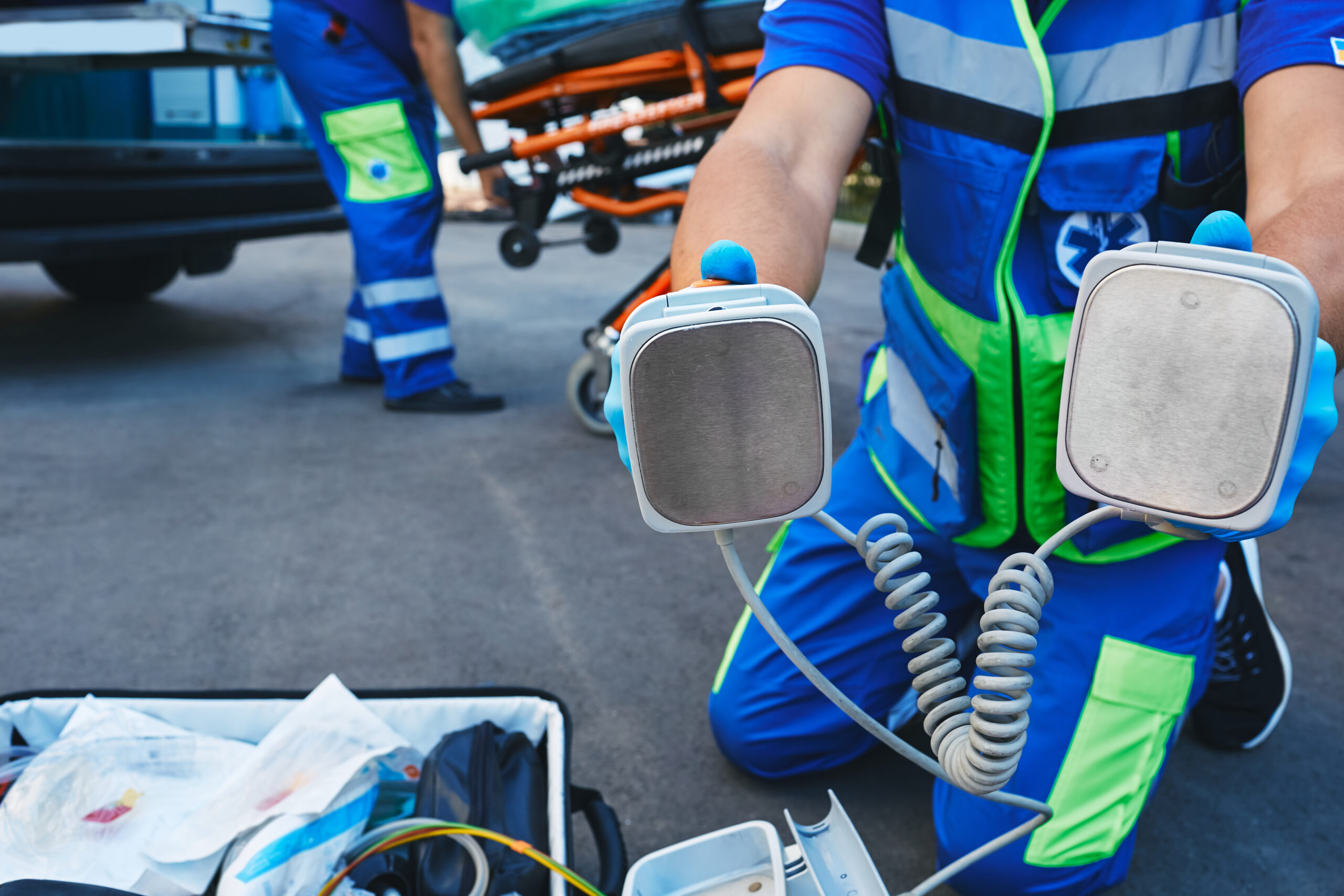
Implantable defibrillators have transformed cardiovascular care by preventing sudden cardiac arrest (SCA) and improving heart health. These small devices, implanted under the skin, monitor heart rhythm and provide immediate treatment for life-threatening arrhythmias. This article will delve into the workings of implantable defibrillators, their benefits, and their essential role in saving lives.
Understanding Implantable Defibrillators
Implantable defibrillators (ICDs) detect dangerous heart rhythms and deliver shocks to restore normal heart function. They are implanted in high-risk patients, monitoring heart activity and automatically responding to irregular rhythms like ventricular fibrillation or tachycardia.
The procedure to implant an ICD is minimally invasive. The device is usually placed under the skin near the collarbone. Small wires, known as leads, are threaded through veins and connected to the heart. These leads carry electrical signals from the heart to the device, allowing it to assess heart rhythms and administer shocks when necessary.
How Implantable Defibrillators Work
ICDs are sophisticated devices that continuously monitor the heart’s activity. If the device detects an abnormal rhythm, it responds with the appropriate therapy, depending on the severity of the arrhythmia. In most cases, the defibrillator will first attempt to use a method called anti-tachycardia pacing (ATP). This involves sending small electrical pulses to the heart to correct the rhythm.
If the ATP method is ineffective, the ICD will deliver a higher-energy shock to reset the heart. This shock, which may feel like a quick jolt or thump in the chest, restores the heart’s normal rhythm and helps prevent sudden cardiac arrest. In extreme cases, when the heart stops completely, the device will deliver a high-energy shock to restart the heart, potentially saving the patient’s life.
Importantly, the ICD can do all of this without human intervention. Once implanted, it monitors the heart’s electrical signals and reacts automatically to dangerous arrhythmias.
Benefits of Implantable Defibrillators
Implantable defibrillators provide several key benefits, particularly for those at risk of sudden cardiac arrest. One of the most significant advantages is their ability to provide immediate treatment during life-threatening arrhythmias. Without such a device, a patient’s chances of survival would drastically decrease if they experienced a dangerous heart rhythm, as medical attention might not be available in time.
Moreover, ICDs contribute to improved quality of life for many patients. People with these devices gain peace of mind knowing they have a safeguard against sudden cardiac arrest. They can participate in daily activities with more confidence, knowing that their heart rhythm will be monitored, and a lifesaving shock will be delivered if needed.
ICDs also serve a preventive role. Many patients with arrhythmias may not notice symptoms like dizziness, fainting, or chest pain. The ICD detects irregularities early, intervening before serious events and preventing the need for emergency defibrillation.
Who Needs an Implantable Defibrillator?
While ICDs are lifesaving for many, they are generally recommended only for individuals at high risk for sudden cardiac arrest or severe arrhythmias. Common conditions that might require an ICD include:
Coronary artery disease (CAD): When the heart’s blood vessels are narrowed or blocked, it can lead to arrhythmias or sudden cardiac arrest.
Heart failure: Patients with weakened heart muscles, often due to conditions like cardiomyopathy, are more prone to life-threatening arrhythmias.
History of arrhythmias: Patients who have experienced dangerous heart rhythms in the past, such as ventricular fibrillation or tachycardia, are at high risk for recurrence.
Inherited arrhythmia disorders: Some individuals are genetically predisposed to arrhythmias, regardless of whether they have heart disease.
Patients with these conditions may benefit from a defibrillator, especially if they have unexplained fainting, dizziness, or irregular heartbeats. Those who have had a heart attack may also be at greater risk of arrhythmias and need an ICD to prevent complications.
Potential Risks and Considerations
Like any medical device, implantable defibrillators come with certain risks and considerations. The implantation procedure is generally safe, but complications such as infection, bleeding, or damage to surrounding tissues can occur. There is also a small risk of the device malfunctioning, though this is rare thanks to advanced technology and constant monitoring.
One of the most common concerns for ICD recipients is the potential for unnecessary shocks. Although the device is designed to provide therapy only when needed, there can be instances where it delivers a shock in response to a non-life-threatening arrhythmia. These shocks can be painful and may lead to anxiety or discomfort for the patient. However, advancements in technology have reduced the occurrence of inappropriate shocks, and physicians can adjust device settings to minimize the likelihood of such events.
Implantable defibrillators are a cornerstone of modern cardiovascular care, providing lifesaving protection against arrhythmias and sudden cardiac arrest. These devices dramatically improve patient outcomes and enhance quality of life by delivering immediate treatment when necessary. ICD implantation has risks, but its benefits outweigh them, especially for high-risk patients. As technology advances, ICDs will continue to be a crucial tool in fighting heart disease and improving patient survival.